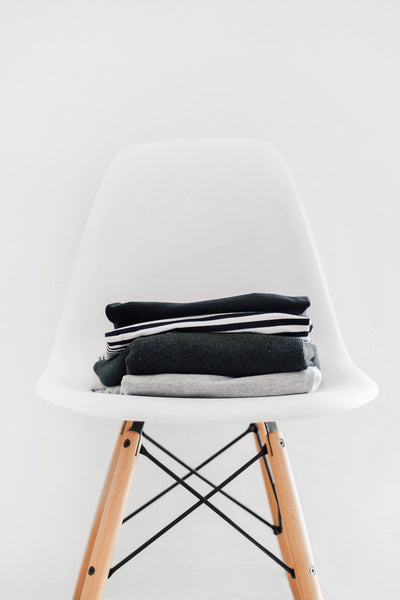MINIMALISM
Getting to where less is more begins with you getting acquainted with the term Minimalism. There is no template where one size fits all. However, ridding your environment of stuff that is not essential, exists in multiples, hasn’t seen the light of day since first encountering Myrtle the dust “ho”, and requires periodic organization, cleaning, and/or plagues your mind by merely being present or just showing up, frees up more time for that which is meaningful.
Minimalism is often viewed as a restrictive life style, however, this is not true. Rather, minimalism is about quality, not quantity. While we are plagued with unquenched desires, propped upright in serpentine line ups, fixated on acquiring more of the latest, greatest, newest version of the stuff we already have and yet, we’re left dissatisfied, and unhappy. The chronic ritual of perpetual spending/acquiring in search of a short-lived high that results in disappointment and increased debt makes no sense. Simply put, having less stuff is a shift in the direction to having more (time, money, peace etc).
Worthy of mention are the 500 – 3000 advertisements we are exposed to daily, intent on igniting our desire to acquire (I smiled too!). Minimalism brings about the potential for a shift in our response to these unsolicited messages. Thus begins the change in the dialogue with our selves, bringing about a clear understanding of what it means to have more with less.

You Can’t Change What You Don’t Acknowledge
Questions signal the beginning of potential change. However, this evolution can only be realized if all variations of excess are addressed and vetted. This means the tangible stuff (9 mated pairs of flip flops to start), and that which occupies your head, heart and time must be triaged and decisions made.
Below, several questions to get you on your way.
1 / How might my life be better with less?
Improved health, diet & sense of well-being, more freedom, energy, clarity & consciousness of thought, more financial freedom & control, more productivity, more time to reclaim & nurture meaningful relationships, more time for creativity/hobbies, more personal growth, gratitude, introspection, solitude, more cerebral real estate for mindfulness… more for you.

2 / What is essential, non-essential and junk?
For everyone, it’s different.
Essential stuff is that which meets our basic/fundamental needs (Who can argue toilet paper?). Non-essential stuff is different. The important question is, “Does it add value?”
A high percentage of the non-essentials are junk, but we pretend they fall into the “non-essential – it adds value” category (I call BS – Brown Sweater on that!). There will be items that are non-essential but bring value i.e., a collage of family photos boasting the extinct combo of spandex and polyester. Keep these. For those that have no value to you but may be useful to someone else, consider donating to charity or realizing a return on your investment through consignment.
Expensive items that no longer thrill, can bring someone else joy. There’s nothing like the joy of giving and the added pleasure in knowing you’ve brought unexpected joy to someone else. Hopefully it falls into their essential-it-brings-value bucket.

3 / Why the 90/90 rule?
Without guidelines, nothing is certain to happen.
The 90-90 rule is a way to determine what is essential. Have you used the item within the last 90 days? If the answer is no, will you use it in the next 90 days? If the answer remains no, let it go, let it go! (#Frozen) It’s likely this item may be something worthy of renting if it is used but once a year.

4 / Are you game?
Joshua Fields Millburn and Ryan Nicodemus of “The Minimalists” recommend (No surprise here.) The Minimalist Game (You didn’t see that coming!) a way of instilling fun into the daunting process of eliminating the non-essentials or junk. Pair up with someone with a similar mindset/goal. Over a 30-day term, you’ll adopt the following approach: Day 1 – eliminate 1 item, Day 2 – eliminate 2 items, Day 3 – eliminate 3 items, up to Day 30 – eliminate 30 items. The opportunity to discard 500 items amidst the backdrop of a healthy dose of competitiveness can be a thrilling motivator. The winner consistently eliminates the appropriate number of items up to and including Day 30. Equally excited, you may well tie & bask in the “more with less” afterglow.

Conclusion
Having your minimalism strategy in play, there is optimism that you’ll feel a little lighter, a little more focussed, and have a whiff of gett’n it done within reach. However, don’t allow complacency to reside in your head.
The war to achieve the more by having less is fought via a series of battles, one item at a time. Your quest will be punctuated with both successes and shortfalls, but if you remain committed and motivated, you’ll find your way to a new finish line, the first of many.
Best-less Wishes!
__________________________________
Written by: C.J. Crooks
Senior Creative Freelance Writer
& G.G. Grande
Senior Research & Content Writer
__________________________________

